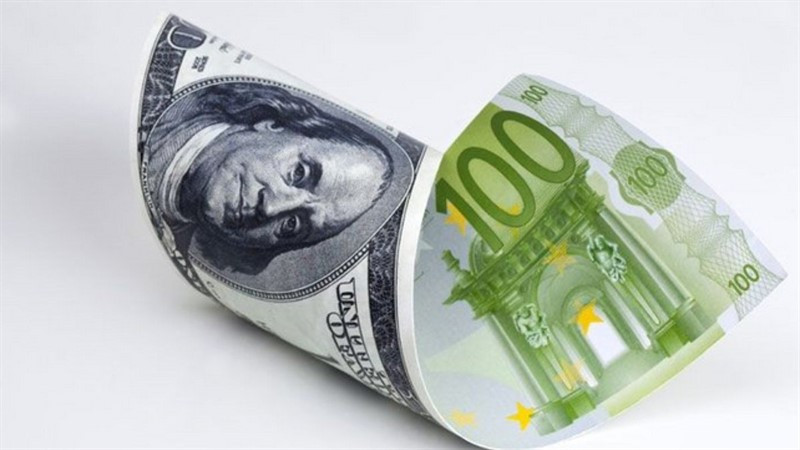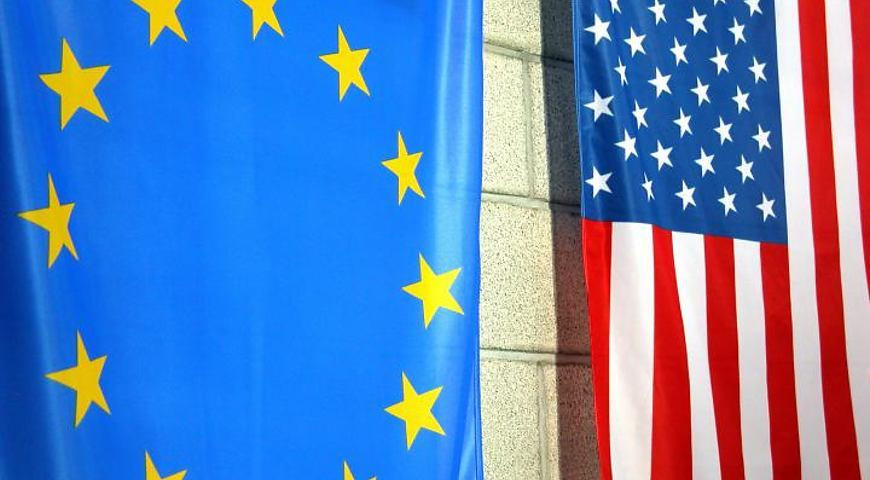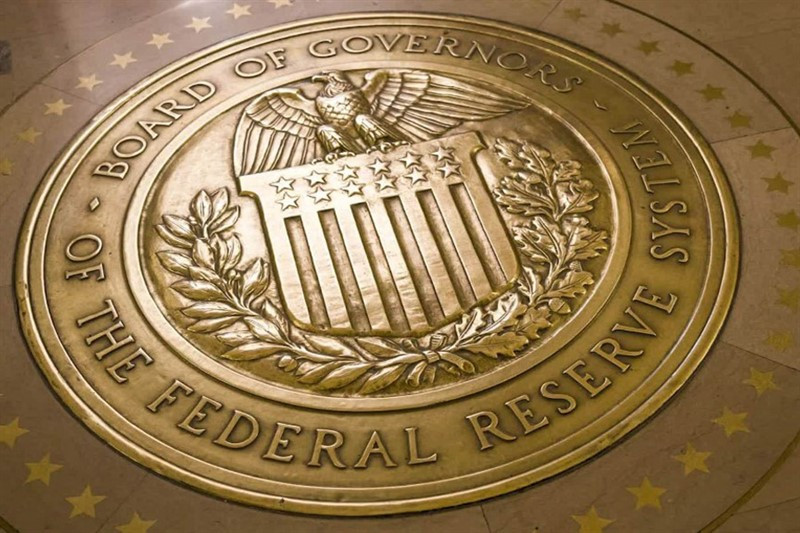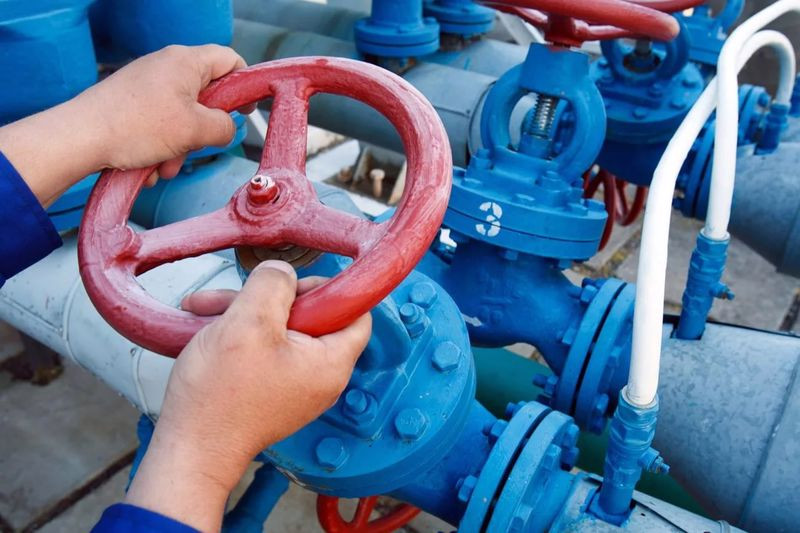
Back in early 2021, the dollar was trading at five-year lows, and few analysts could have predicted that the greenback would then show strong growth.
Compared to January last year, the greenback has risen in price against the basket of major currencies by almost 20%, having recently reached a 20-year high in the region of 109.30 points.
More than two-thirds of the USD growth occurred in the current year. This is largely due to the hawkish attitude of the Federal Reserve, which has raised its key rate by 1.5% since March, trying to contain inflation and gaining the highest pace of monetary policy tightening since the early 1980s.
All other things being equal, a country with higher rates should have a stronger currency, since assets in this country bring higher returns, thereby attracting more capital inflows.
In the 12 months to mid-July, the gap between the yields of two-year US and German government bonds increased by about 2 full percentage points in favor of the dollar, reaching a total peak of 270 basis points. This coincided with the EUR/USD pair falling by more than 18%.
The contrast in monetary policy on both sides of the Atlantic not only explains why the dollar has strengthened so much against the euro, but also reflects deep differences in economic fundamentals.
In the United States, excessive demand, partly driven by fiscal and monetary stimulus during the pandemic, appears to have played a key role in driving inflation.
Although inflation is as high in the euro area as in America, in the eurozone it is mainly due to rising gas prices. Raising interest rates will not reduce energy costs, but will increase the chances of a recession.

Core inflation, which does not take into account volatile food and energy prices, rose to 5.9% in the United States in June, and only to 3.7% in the eurozone. Therefore, the tightening of monetary policy seems to be a more pressing issue for America than for Europe.
However, central bankers in Frankfurt am Main seem to disagree with this formulation, who last week pointed to the end of an eight-year experiment with negative interest rates.
Last Thursday, the European Central Bank approved a more significant than expected increase in the cost of borrowing, which returned the deposit rate in commercial banks to zero.
"The reason we decided to move away from the signal we gave back in Amsterdam was twofold. Firstly, we had a clear awareness of the upward risks to inflation. And I can give you a whole list of such examples," ECB President Christine Lagarde said at the final press conference.
"Secondly, the euro has fallen significantly against the dollar over the past few weeks. This has an impact on the prospects for inflation. So it was on the basis of this set of elements related to monetary policy that we made the decision," she added.
The single currency's fall from above $1.04 to below parity against the dollar in July, apparently, increased concern in the ranks of the ECB about the already sharp decline in the euro in 2022. The latter leads to an increase in the cost of imported goods, including energy and fuel, and has a negative impact on the prospects for inflation.
On July 14, the EUR/USD pair fell to the lowest values since December 2002 in the area of 0.9950, but since then it has recovered somewhat.
The ECB's rate hike by 50 basis points at once contributed to the fact that some traders closed their short positions on the euro. This served as a tailwind for the single currency and helped it rise to two-week highs in the area of $1.0270-1.0280.
However, only the growth of EUR/USD above 1.0350 will be a significant signal of the victory of the bulls. In the meantime, we can only talk about a technical correction after a strong oversold.

"Interest in purchases of the single currency after the ECB decision weakened around $1.0275. Thus, it has not returned to the 1.0300-1.0340 area, the breakthrough of which is required to launch a more sustainable recovery," UniCredit strategists noted.
According to the bank's forecast, the euro exchange rate against the US dollar will be $1.03 by the end of September, ahead of a further gradual recovery to $1.06 by the end of the year.
"We believe that this theme of gradual recovery extends to 2023. We expect the euro to approach $1.12 over the next year," UniCredit said.
According to a number of experts, the strengthening of the ECB's hawkish attitude challenges the exclusivity of the Fed, as well as those who hold bearish views on the prospects for EUR/USD.
However, the main question is whether the ECB will be able to keep up with its US counterpart.
The euro remains above parity against the dollar reached earlier this month, but ING strategists warn that investors may begin to reconsider expectations for a rate hike by the ECB.
Money markets are now forecasting an increase in the cost of borrowing in the eurozone by 39 bps in September compared with 50 bps last week and expect a rise of 100 bps by the end of the year.
ING analysts explained the dollar's recent loss of momentum by the actions of traders who reduced excessively long positions in the US currency.
"The trigger for the alignment of positions on USD could be a reassessment of the timing of reaching the limit levels by US rates and discussion of their reduction," they said.
Federal funds rate futures show that rates will peak in January 2023. In addition, the market began to put into prices the expectation of a reduction in rates in the United States, starting in the spring of next year.
"But the Fed has fewer opportunities for a dovish surprise compared to the ECB. The pricing of the Fed rate more or less corresponds to the dot chart of the central bank and the forecast of inflation/economic growth," ING reported.

The greenback retreated by about 2% from its 20-year high reached against a basket of major currencies less than two weeks ago.
The USD index fell by 0.24% to 106.42 points on Monday.
Over the weekend, US Treasury Secretary Janet Yellen warned of a slowdown in the national economy, although she said that a recession is not inevitable.
These comments made traders wonder if the slowdown in the US economy might shift the focus from inflation and signal a slower pace of Fed rate hikes in the future.
The broad weakness of the dollar allowed the euro to shrug off an IFO report that business morale in Germany fell in July to its lowest level in more than two years at 88.6 points.
In addition, on Monday it became known that gas supplies to the EU via the Nord Stream-1 pipeline will be reduced to 20% of capacity. However, the single currency's reaction to this news was restrained.
"Perhaps this reflects the desire of market participants to wait and see how temporary the supply reduction will be, although uncertainty about supplies in the coming months will harm economic growth, as European leaders will have to restrain demand no matter what happens. It is also possible that the size of short positions on the euro is finally large enough, after another increase last week, to mitigate the weakening of the single currency," Societe Generale analysts noted.
Following the results of yesterday's trading, the euro rose against the US dollar by 0.14% to $ 1.0220.
However, bears quickly returned to the single currency and led the EUR/USD pair to multi-day lows around 1.0100 on Tuesday.
This happened after the EU member states decided to reduce the demand for Russian gas by 15% from August to March - first on a voluntary basis, and then, if necessary, forcibly.
This decision has raised concerns about a slowdown in economic growth in the eurozone, and several major banks now expect the eurozone to enter recession at some point in Q4.

"The story of Russian gas is a black swan, a constant threat that dominates the euro," ING analysts said.
"Even if the gas flow is not completely blocked and it does not come to rationing, the European economy has already suffered great damage," they added.
Citi analysts have a similar point of view.
"The gloomy IFO business survey for Germany published on Monday was most likely caused by uncertainty about the future supply of Russian gas. The latest supply cut will at least keep this uncertainty at a high level," they said.
According to IMF estimates, the complete disconnection of Europe from Russian gas supplies will have disastrous consequences for the economies of the countries of the region. In particular, twelve months without Russian gas may cost some European countries several percentage points of GDP.
In the worst-case scenario, if the EU fails to quickly replace the dropped supplies of Russian pipeline gas with LNG supplies, and at the same time Brussels decides to protect not only industry but also private households from gas shortages, then the GDP of the countries of the region may decrease by five to six percentage points.
"We expect that the euro will remain under downward pressure in the near term, caused by continuing concerns about disruptions in the eurozone economy due to restrictions on energy supplies," MUFG analysts said.
"It is becoming increasingly common that the price that the EU will have to pay for supporting Ukraine will be the rationing of gas supplies," Rabobank analysts said.
They recently revised down their forecasts for EUR/USD, pointing out the risk that the pair could fall to 0.95 during the summer.
Rabobank expects that the strengthening of the dollar as a whole will weaken at the beginning of next year, which will allow the EUR/USD pair to recover to the level of 1.0500 on the horizon of six months.
While uncertainty about Europe's energy security hangs like a threat over the single currency, the greenback is supported by signs of a global economic downturn. Such concerns were reinforced on Tuesday by data on the United States.
The Americans' consumer confidence index, tracked by the Conference Board, fell to 95.7 points in July, and new home sales declined 8.1% over the month in June.
During periods of financial turmoil, the USD often grows as a safe haven, because investors believe they can ride out any storm in America's well-regulated, highly liquid money markets.
The model developed by Standard Chartered showed that about 45% of the strength of the dollar in recent years is due to its status as a safe haven currency.
On Tuesday, the greenback leaves behind three consecutive daily pullbacks and returns to the area above 107.00.
Further, there are no significant barriers up to multi-year highs in the area of 109.30. A break above will bring the 109.75 and 110.00 marks into play.
Meanwhile, initial support is at 106.40, followed by 106.10 and 105.80.
As for the EUR/USD pair, the nearest support is the 1.0115 mark, followed by the psychologically important 1.0000 level and, finally, 0.9952 (a multi-year low from July 14).
On the other hand, a breakthrough above 1.0280 will allow the bulls to take a course at 1.0445 (55-day moving average), and then aim at 1.0615 (weekly high of June 27).





















